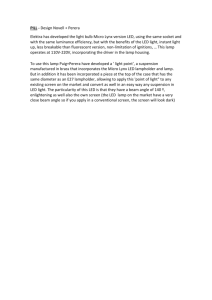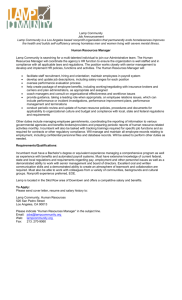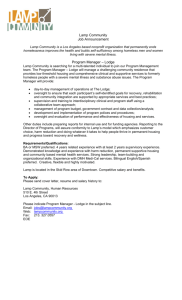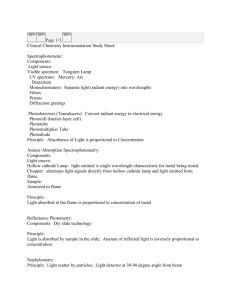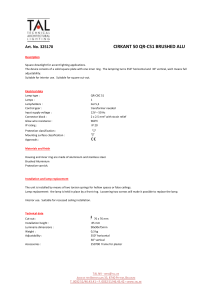Radiation Lab Reports
advertisement
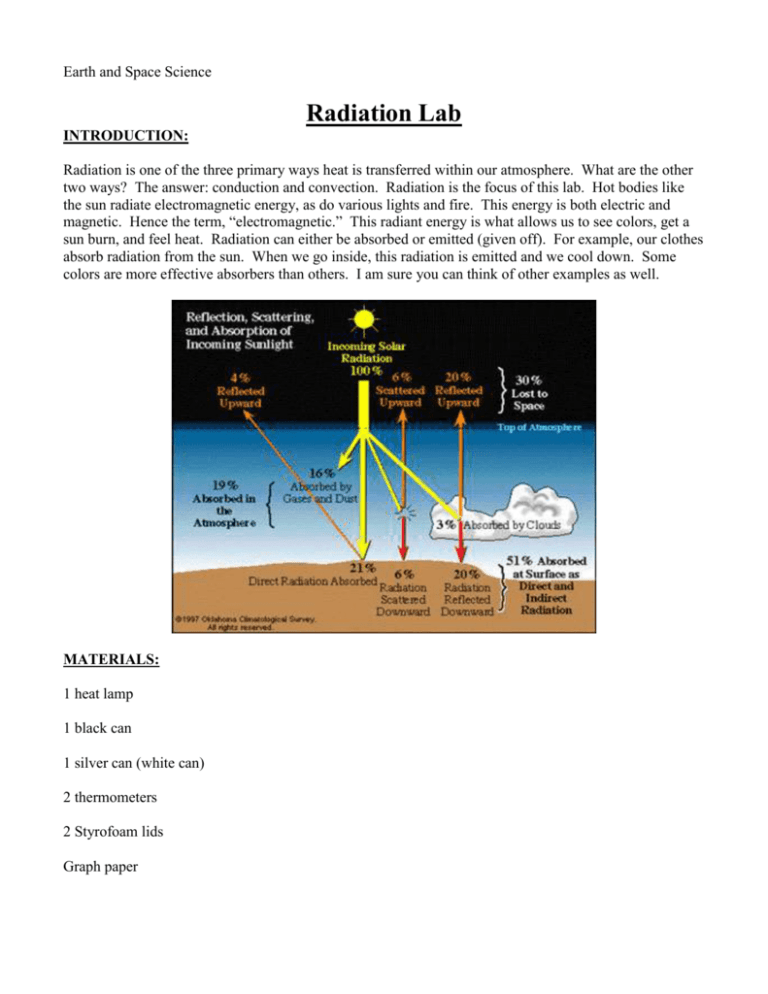
Earth and Space Science Radiation Lab INTRODUCTION: Radiation is one of the three primary ways heat is transferred within our atmosphere. What are the other two ways? The answer: conduction and convection. Radiation is the focus of this lab. Hot bodies like the sun radiate electromagnetic energy, as do various lights and fire. This energy is both electric and magnetic. Hence the term, “electromagnetic.” This radiant energy is what allows us to see colors, get a sun burn, and feel heat. Radiation can either be absorbed or emitted (given off). For example, our clothes absorb radiation from the sun. When we go inside, this radiation is emitted and we cool down. Some colors are more effective absorbers than others. I am sure you can think of other examples as well. MATERIALS: 1 heat lamp 1 black can 1 silver can (white can) 2 thermometers 2 Styrofoam lids Graph paper OBJECTIVES: 1. Determine how different types of containers absorb and radiate (emit) energy. 2. Interpolate from graphical data the rate (change in temperature divided by change in time) at which the containers absorb and radiate energy. 3. Explain the symbolic relationship between the materials used in this lab and everyday Earthly processes. PROCEDURE: 1. Put a thermometer in each of the cans and make sure the temperatures can be easily read. 2. Align the cans so that they are side by side but not touching each other. 3. Use a lamp holder or a stack of flat books so the light is shining at the middle part of the cans. Make sure that the light on both cans is distributed as evenly as possible. 4. Move the heat lamp and adjust it so the distance from the bulb of the heat lamp to each of the cans is about the same distance from your elbow to your wrist. 5. Record the temperatures of each of the cans in the table for when time is 0 minutes. This is the initial temperature. The temperature should be the same in each of the cans at the beginning. 6. Turn on the lamp, and record the temperatures in the table every minute for 15 minutes. 7. After 15 minutes, there should be 16 temperatures for each of the cans. Turn off the lamp and redirect it so it is facing away from the cans. This way, it will not radiate more energy to the cans. 8. Record temperatures every minute for the next 15 minutes. elbow to wrist distance DATA TABLE: LIGHT ON TIME BLACK CAN (Temperature in C) SILVER CAN (Temperature in C) 0 min. 1 min. 2 min. 3 min. 4 min. 5 min. 6 min. 7 min. 8 min. 9 min. 10 min. 11 min. 12 min. 13 min. 14 min. 15 min. LIGHT OFF TIME 16 min. 17 min. 18 min. 19 min. 20 min. 21 min. 22 min. 23 min. 24 min. 25 min. 26 min. 27 min. 28 min. 29 min. 30 min BLACK CAN (Temperature in C) SILVER CAN (Temperature in C) GRAPHICAL REPRESENTATION OF DATA: Now you need to construct a graph from your data table above. Your graph will eventually look similar to the graph below. The most difficult part for you will be the construction of a “best fit” line. You will have 4 best fit lines as listed below. The purpose of a best fit line is to help you find the slope (rate of change) of a set of data. Remember from mathematics that slope is rise over run. Best fit lines are linear in nature meaning that they are perfectly straight lines. 1. Black can2. Silver can – 3. Black can – 4. Silver can – lamp on lamp on lamp off lamp off Set up your graph as shown below with temperature (degrees Celsius) on the y-axis and time (minutes) on the x-axis. At the 15 minute mark, draw a vertical line that represents when the lamp was turned off and moved away from the cans. DO NOT CONNECT THE POINTS, ONLY MAKE A BEST FIT LINE! SLOPE CALCULATIONS (You MUST use your best-fit line, right triangle, and rise over run values, all present on your graph to complete this section!!!): SHOW ALL WORK...AND…DON”T FORGET YOUR UNITS!!! 1. Rates of temperature change for the black can using your best fit lines: LAMP ON LAMP OFF 2. Rates of temperature change for the silver can using your best fit lines: LAMP ON LAMP OFF ANALYSIS AND CONCLUSION QUESTIONS: 1. Which container absorbed the energy from the lamp more quickly? How could you tell? _____________________________________________________________________________________ 2. Which container radiated (emitted) energy more quickly? How could you tell? _____________________________________________________________________________________ _____________________________________________________________________________________ 3. What general statement can you make about the color of a surface and its abilities to absorb and radiate energy? _____________________________________________________________________________________ _____________________________________________________________________________________ 4. What general statement can you make about the radiating ability of a substance if you know its ability to absorb energy? _____________________________________________________________________________________ _____________________________________________________________________________________ 5. Compare the rates at which the two containers absorbed heat. Explain the difference between the two rates. _____________________________________________________________________________________ _____________________________________________________________________________________ 6. Compare the rates at which the two containers radiated (lost) heat. Explain the difference between the two rates. _____________________________________________________________________________________ _____________________________________________________________________________________ 7. If a red container was introduced into this lab, how would its rate of energy absorption and energy emission compare to that of the black and silver container? Why? _____________________________________________________________________________________ _____________________________________________________________________________________ _____________________________________________________________________________________ 8. Based on what you learned in this lab, explain what your feet would experience as you walk out of the ocean and progress from the wet sand, to the dry sand, through the grassy area, and then onto an asphalt parking lot during… a). the daytime hours on a clear sunny day in summer. b). the evening hours after sunset on the same day. CONCLUSION: 1. In your own words, state what you learned by doing this lab. 2. In addition, can you think of how to perform this lab keeping the concepts the same but using different materials? 1. ________________________________________________________________________________ __________________________________________________________________________________ __________________________________________________________________________________ __________________________________________________________________________________ 2. ________________________________________________________________________________ __________________________________________________________________________________ __________________________________________________________________________________ __________________________________________________________________________________ __________________________________________________________________________________

